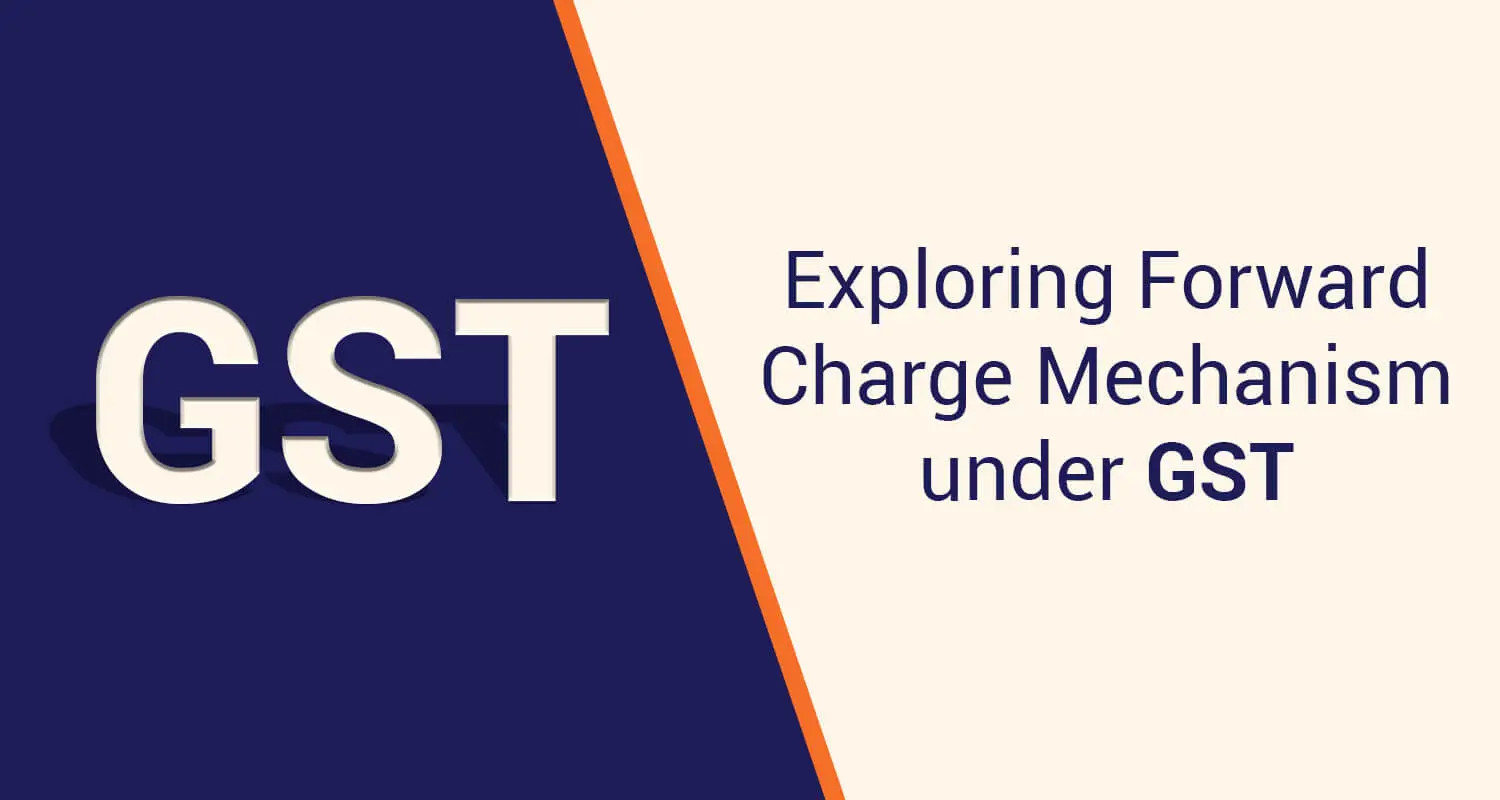The GST, or Items and Service Tax, system has been a recreation changer for everybody in India. Since its launch in 2017, it has been the largest oblique tax reform. It has simplified the tax system bringing all the things below a single roof by eliminating the a number of layers of state and central taxes. Among the many diversified processes provided by GST, the Ahead Cost Mechanism holds vital significance. Let’s discover what’s Ahead Cost Mechanism in GST and the way it impacts the provider in addition to the receiver.
What’s Ahead Cost Mechanism below GST?
It’s a mechanism the place the provider of the products is chargeable for accumulating taxes and remitting it to the federal government. In consequence the receiver of the products needn’t be concerned within the direct tax fee because the provider relieves them of this burden. This makes it simple for everybody concerned within the transaction/commerce to adjust to the GST laws.
Benefits of Ahead Cost Mechanism below GST
There are a number of benefits to utilizing the Ahead Cost Mechanism. These embrace:
Simplified Course of
By way of the ahead cost mechanism, taxes turn into simpler to grasp. Furthermore, it reduces the complexity of tax calculations, thereby smoothing out the method for taxpayers to satisfy their tax-related obligations.
Promotes Transparency
The mechanism requires the suppliers to explicitly point out the quantities being charged on the bill. It creates a proper report, and you may clearly see the precise quantity that you’re paying.
Equity is Maintained for All
The Ahead Cost Mechanism ensures everybody follows the identical tax guidelines. There are not any exceptions or particular privileges for anybody, no matter their monetary standing. The suppliers are chargeable for diligently paying the taxes, leaving no room for tax evasion, thus selling truthful enterprise practices.
Boosts Effectivity
The mechanism vastly simplifies tax assortment. When the duty is shifted to the suppliers, the federal government ensures that taxes are being collected successfully and streamlines the method. In consequence, everybody advantages when there’s an assurance that each one the sources can be found for important public providers.
How Ahead Cost Mechanism works below GST
Step 1
Suppliers must generate invoices for his or her items or providers. These invoices clearly point out the breakdown of the value, together with the corresponding GST quantity.
Step 2
The receiver has to pay the total quantity talked about within the bill to the provider. That is the collective value of the price of items/providers in addition to the GST quantity.
Step 3
The provider is then supposed to gather the GST portion of the fee from the recipient. They then file their GST returns, reporting the collected tax and remitting it to the federal government.
Step 4
If the recipient is registered below GST, they’ll declare an Enter Tax Credit score (ITC) for the GST they paid whereas buying. Nonetheless, it’s as much as the Provider and the profit depends upon the provider fulfilling their duty by submitting the collected taxes to the federal government.
Conclusion
The Ahead Cost Mechanism (FCM) performs an important function in making certain transparency and effectivity in India’s Items and Providers Tax (GST) system. It simplifies the method for recipients and reduces the scope of tax evasion by putting your complete duty of accumulating and remitting tax on suppliers. It additionally helps the federal government acquire income extra successfully and creates a fairer enterprise setting.
Nonetheless, it is essential to do not forget that the mechanism is closely depending on suppliers fulfilling their tax obligations. For registered companies, claiming Enter Tax Credit score (ITC) depends on the provider submitting the collected GST to the federal government. Due to this fact, each suppliers and recipients want to pay attention to their duties below FCM to make sure the sleek functioning of the GST system.
FAQs
1. Who’s chargeable for accumulating GST below FCM?
Ans. The provider of the products/service collects GST and can be imagined to remit it to the federal government below the Ahead Cost Mechanism. This ensures that the recipient is free from the burden of straight paying the tax.
2. What are some great benefits of Ahead Cost Mechanism?
Ans. There are a number of benefits of FCM, corresponding to simplified tax processes, elevated transparency by means of clear bill breakdown, equity within the system by making certain everybody follows the identical tax guidelines, and improved effectivity in tax assortment for the federal government.
3. How does Ahead Cost Mechanism work for the provider?
Ans. Suppliers below FCM have to generate invoices with a transparent breakdown of the value and the corresponding GST quantity that must be paid. The provider then collects the GST portion from the recipient, recordsdata their GST returns, reviews the collected tax, and at last remits it to the federal government.
4. Can registered companies declare ITC below Ahead Cost Mechanism?
Ans. Sure, completely. A registered enterprise can declare an Enter Tax Credit score (ITC) for the GST paid on its purchases below FCM. Nonetheless, this profit relies upon solely on the provider fulfilling its obligation to submit the collected tax to the federal government.
!function(f,b,e,v,n,t,s) {if(f.fbq)return;n=f.fbq=function(){n.callMethod? n.callMethod.apply(n,arguments):n.queue.push(arguments)}; if(!f._fbq)f._fbq=n;n.push=n;n.loaded=!0;n.version='2.0'; n.queue=[];t=b.createElement(e);t.async=!0;t.defer=true; t.src=v;s=b.getElementsByTagName(e)[0]; s.parentNode.insertBefore(t,s)}(window, document,'script', 'https://connect.facebook.net/en_US/fbevents.js');
setTimeout(function() { fbq('init', '2933234310278949'); fbq('init', '3053235174934311'); fbq('track', 'PageView'); }, 10000);
